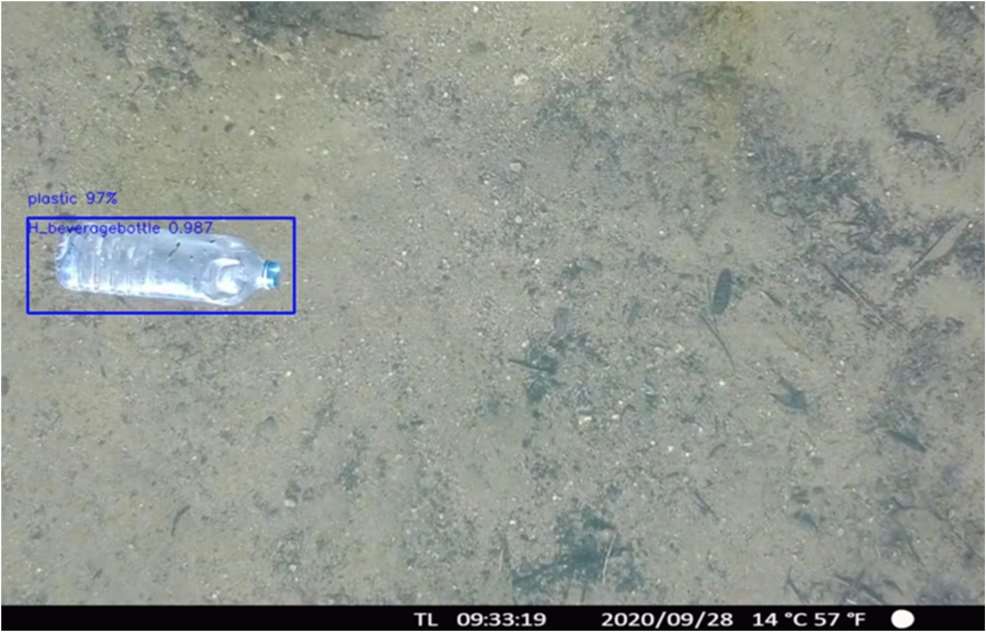Using AI and cameras to identify and monitor litter
The challenge
A common method for collecting data on plastic pollution and monitoring litter relies on humans conducting on-ground visual counts. This process is labour-intensive and makes it difficult to monitor many locations simultaneously or over extended periods.
Our response
Artificial Intelligence (AI) is helping us understand the extent of plastic pollution in Australia and globally, and how to stop it before it enters our waterways.
We have developed AI and machine learning (ML) capabilities to identify plastic waste in our creeks and streams. Using ML enables us to collect, process, and analyse plastic pollution more quickly, accurately, and effectively. The video software can tell a chip packet from a soft drink bottle. This will provide useful and accurate data to agencies looking after the waterways.
An example of near-real time object detection and classification using AI (source: CSIRO).
This technology is being applied to research projects in Australia, London and Bangladesh, with the aim to roll this out to other cities and countries around the world too.
Impact
This research enables us to analyse footage to detect and identify the rubbish that ends up in our waterways. Knowing what sort of rubbish ends up in our environment will help inform waste management strategies. It highlights where interventions can stop plastic from entering our rivers and ending up in our oceans.
The data will also help identify where there are litter hot spots. The information will help waste management agencies understand what intervention and community education methods might work best to stop the rubbish in the first place.
More information can be found here and by reading our factsheet (pdf and word versions).


